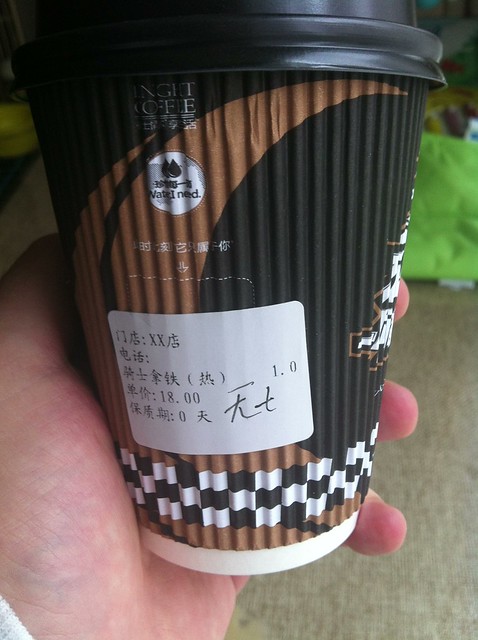No Sugar, No t
“No sugar” or “sugar-free” in Chinese is 无糖. The character 无, in its simplified form (not 無), is not particularly difficult to write. It’s barely more complex than “#.” The character for “sugar,” however, is a different story: 糖. Kind of complex.
So if you’re working in a coffee shop and have to quickly mark coffee cups with a label that means “no sugar,” what are you going to use? Are you going to bother to write 无糖 over and over? Here’s what an employee at Knight Coffee writes:
So “无t” instead of “无糖.” (You can often see similar things going on if you can get a peek at the way that restaurant servers write down food orders by hand.)
Modern Chinese people grow up being equally familiar with the Latin alphabet and Chinese characters. Writing by hand is becoming less and important, and writing characters is sometimes seen as a burden. Typing on a computer can make it easier to type out complex characters (because you’re not actually writing out all the strokes anymore), and yet young Chinese people on the internet are mixing the Latin alphabet into Chinese quite liberally.
It does make you wonder how quickly we’re going to start seeing fundamental changes to the way Chinese people write. All languages change over time, although the written language often resists change much longer. But there’s a new catalyst in the equation this time: the internet.
Exciting times.


is the title a reference to No Sugar Tonight, from the Guess Who?
In Japan we’re seeing a resurgence in complex characters such as 鬱 because of the ease of typing (as opposed to handwriting). So if your thesis is that the internet will lead to greater simplification or full-on Romanization, I think it’s not quite that simple.
I’ve seen similar things in Taiwan too, but they seem to go one step further by using the English, i.e. ‘s’ for sugar and ‘i’ for ‘ice’. So for example, 去冰半糖 sometimes becomes 去s半i when handwritten. It’s not exactly common, but I think most people would understand the meaning in context.
The “t” strongly resembles the character for seven 七. However, the “t” is much smaller in size. To the Chinese eye, this would indicate a different meaning because the size of the characters are not uniform. This would certainly indicate a system of meaning and agreement of sorts.
The use of the Roman alphabet in Chinese words, especially those which are in vogue (and some of which are too crass for the likes of this blog; see Chinasmack glossary for details), are in common usage. The meanings can be quite manifold, depending on cultural point of view. For example, the word BS. In English, we would think it would be related to cow dung or a matter which is not true. But in Chinese it is short for 鄙视, bi3 shi4, which means “despise”.
I was amused by a server writing down orders of “G肉”.
Sometimes I think modern technology is actually slowing language change at least as far as writing is concerned. Computers and typing make it so much easier to use characters than handwriting. It’s funny how the opposite seems to be happening in English, as we abbreviate our words into things like LOL, OMG, BRB, etc.